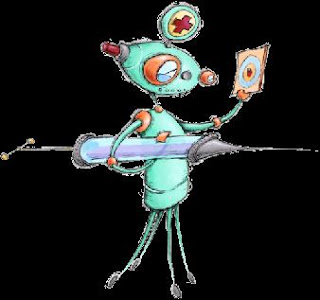A few years ago, a friend of mine
(You Know Who You Are Spooky) gave me a pin that said “CANCER STILL SUCKS.” I love it!
However, it’s definitely not something I wear to church or to social
gatherings with people I don’t know very well.
Now that I think of it, we don’t do a lot of social gatherings – maybe we
should start! Hmmm...something to think
about.
Anyway, I’ve been seen wearing
the pin to chemo treatments, doctor’s visits, just about any medical facility,
and definitely when I’m feeling “sucky” myself!
So, surprise, surprise, I’ve been wearing it a lot lately. The vile, disgusting monster has returned
with a few new twists this time. It
decided to branch out a bit and set up a few new settlements for its HELL
TOWN. It’s still respecting the organ
barriers, thank You God, but it’s pushed me into fighting mode again.
Once again, the CA-125 lab test
has proven accurate for me. I realize it’s
not always a reliable indicator for everyone, but it has been in my case. My last chemo treatment was in May of
2012. About 2 months later, the numbers
began slowly creeping up. Nothing
drastic, just a steady climb – the last being a jump of over 40 points. A PET scan was scheduled a few weeks ago and
showed definite progression of the disease.
We discussed the options with my incredible medical team and decided on
one of two options that seemed the most viable.
As I’ve mentioned before, they are always quick to suggest a second
opinion – Moffitt Cancer Center being the usual suggestion, mostly because of
relative proximity and previous experience – but any and all other sites are embraced
as well. They truly believe that their
patients deserve the best that’s out there – even if they aren’t able to offer
it as yet.
We had been to Moffitt a year ago
when my second remission came to an end.
At the time, they reviewed my records and past treatments as well as the
planned treatment to begin the following week.
At that time there were no clinical trials that I would qualify for but
the doctors all agreed that everything that had been done and everything that
was planned for me followed exactly along the lines that they, themselves,
would have prescribed. It’s very
reassuring to hear that, even though I trust and respect my medical team
completely.
Well, last week we made the
3-hour trip back to Moffitt with the current scan in hand. Again they agreed with my treatment thus far. However, this time they had a trial that I
might qualify for. It would involve the
administration of 2 proven chemotherapy drugs in addition to a 3rd
experimental drug. 50% of the
participants on the trial would get the trial drug and 50% would get a placebo. I’m
not particularly fond of this “placebo arm” of the trial, but I would still be
getting 2 drugs that have worked for me in the past. I would also fulfill something I’ve thought
about for a long time. I might possibly
be able to participate in a clinical trial that will bring an end to this vile
disease once and for all – or, at the very least, ease the suffering of future
victims.
The first step was to requisition
a tissue sample from my original surgery from the hospital archives. That has been done and we are now waiting to
see if it meets the trial criteria. We
believe it will – we hope it will. If it
does, the next step will be a trip to Moffitt to meet with the study doctor and
set up the beginning of my treatments. If it doesn’t, we still have an
excellent treatment waiting for us at our home base, right here at Halifax.
We’re excited, anxious, nervous,
eager, motivated, and a little frightened – but very, very hopeful! I’ve found an unusual twist to the
discussions and research and dialogues that have been going on this past week
or so. I've solicited and respected my children's opinions and questions, as well as those of my live-in guardian angel – and I've also spoken with nurses, doctors, and
other friends. I know I’ve mentioned it
before, but I worked in clinical research for many years before I retired a few
years ago. We conducted clinical trials –
I’m comfortable in this arena. Suddenly
all the research jargon and terminology going on around me are familiar and
comfortable. It seems bizarre, but I suddenly feel like I have some control –
or, I should really say some understanding, not control, of what’s happening. I can read protocols; I understand data
collection and the importance of equipment calibration. I get the discussions of biomarkers and
pharmacokinetics. I know what IRBs are
and how they work. It makes sense to me
and I guess I feel comfortable – more comfortable than I have in quite a while.
For the past 4 years, I have simply
trusted whenever someone came at me with a needle – or whenever someone hooked
me up to a bag of toxic chemicals. I
trusted when someone told me I needed a transfusion, or that my white count was
so low I needed to put on a mask and hide in a closet for a few weeks. For all my medical background, I never worked
in oncology; I never administered chemotherapy to anyone. I simply trusted. But when you take the time to find very best,
it’s easy to trust them. And I definitely
do have the very best! And now I have
the chance to understand, fully participate, and still trust! And maybe this will be the drug that makes a
difference!
SURVIVAL TIP OF THE DAY: Everyone is trying to accomplish something big, not realizing that life is made up of little things.







